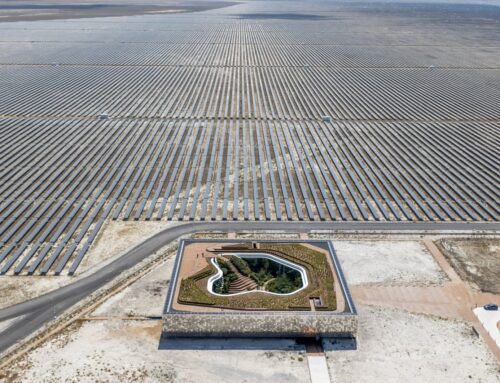Alphabet’s Clean Energy Moonshot: Why It Depends On AI
October 9, 2024

We aren’t ready. Even as the energy sector hurtles toward an inevitable—and much-needed—shift from fossil fuels toward clean energy, it lacks the infrastructure to support this change.
The electrical grid, which acts as the backbone for energy transfer, wasn’t designed to handle these emerging demands. Mostly assembled decades ago in a patchwork, ad hoc manner, it’s incapable of incorporating a quickly-growing range of energy sources such as wind and solar. Moreover, it’s not built to manage the intermittent and geographically scattered nature of these energy sources as they multiply.
The requirements are daunting. Experts warn that we must build or refurbish 80 million kilometers of grid—the equivalent of the entire grid built to date—by 2040 to meet climate and reliability goals. Even today, it’s congested: New sources of renewable energy must wait for years before they can connect.
To Grow Thyself, Know Thyself
You can’t upgrade something if you can’t see it. Grid operators and planners don’t fully know the grid they’re managing. There’s no central view and no standard, global paradigm for representing regional grids. Operators typically have accumulated various maps and documents that conflict with one another and are sometimes out of date—the result of years of expansion that’s been more reactive than proactive. Part of the problem is that maintenance changes aren’t systematically tracked. For example, during a storm, responders may connect, disconnect, turn on or turn off equipment such as transformers without recording the change.
Who’s up to the task? There’s no organization better suited to perform the kind of mass-scale information-gathering that will provide desperately-needed grid visibility than the company whose mission is “to organize the world’s information,” Google… or, to be precise, its “moonshot factory” sister, X, which shares Alphabet as a parent. X’s moonshot initiative for the electrical grid is called Tapestry.
In my last article, I covered how Tapestry is repurposing Google Street View hardware to help grid operators identify components that require maintenance. Well, it turns out they’re killing two birds with that effort. This process also identifies what components exist in the first place.
Short-term wins serve long-term challenges. “Grid operators initially work with us to relieve pain, keeping the lights on by detecting grid defects efficiently,” Tapestry lead Page Crahan told me. “But they’re more than happy to hear that we’re delivering not only a pain-killer, but also a vitamin. Once we help them keep the lights on for another day, they can turn to the broader, longer-term mission: radically upgrading toward a future of clean, sustainable energy.”
High-speed simulation is the key downstream deliverable of Tapestry’s solution, the Grid Planning Tool. Simulation is critical for planning medium- and long-term upgrades and expansions, since each prospective plan can be stress-tested via simulation. Simulation also facilitates daily, near-term planning, such as managing energy flow on a day forecasted for high air conditioning demand and yet too little wind to generate supply from wind farms. Only with a complete record of grid components and architecture is grid simulation possible.
Predictive AI Delivers Grid Visibility
So many photographs, so little time. This modified Street View technology delivers a great number of images—now what?
AI assimilates and organizes, transforming this data dump into a cohesive and comprehensive grid model. After all, Alphabet’s track record with machine learning is unprecedented, including the deployment of ML for other initiatives at X.
Predictive AI helps in two ways. First, it identifies components in images—such as utility poles, transformers, pin insulators and cut-out fuses—as well as identifying the material from which they’re made. For example, in Michigan, fuse cutouts are made from either polymer or porcelain; the latter exhibit a higher failure rate.
Tapestry’s Grid Planning Tool identifies electrical grid components.
X (formerly Google X)
Second, predictive AI is core to Tapestry’s system for matching and merging various knowledge sources, integrating them into a single source of truth. In this way, the new stream of surveillance from the physical world is reconciled with a typically fragmented array of internal operator documents that map out various portions of their grid.
So far, Tapestry is helping grid operators in six countries—Australia, Chile, New Zealand, South Africa, the UK and the US. Among these partners, Chile’s Coordinador Electrico Nacional has announced its intentions to achieve net zero emissions by 2050. To pursue this ambition, it must simulate the potential generation, distribution and consumption of energy.
Such efforts previously took months, but with the fully digitized view provided by Tapestry’s Grid Planning Tool, simulations run much more quickly—and, rather than only running one scenario at a time, the operator can now run 30 simultaneously.
This is a moon worth shooting for. The world’s grid needs this unprecedented initiative to generate a unified view, accelerate the onboarding of renewables and holistically plan for an evolution toward energy sustainability.
Search
RECENT PRESS RELEASES
Related Post



